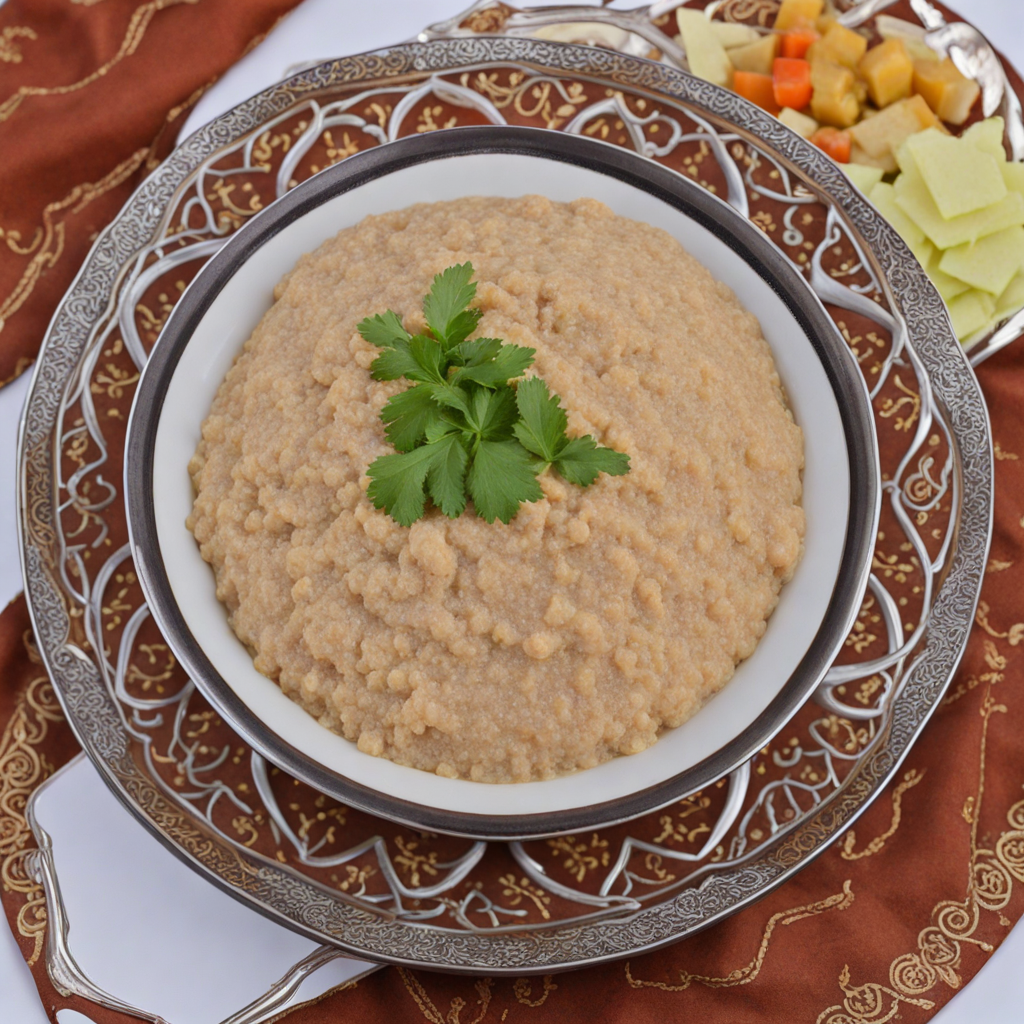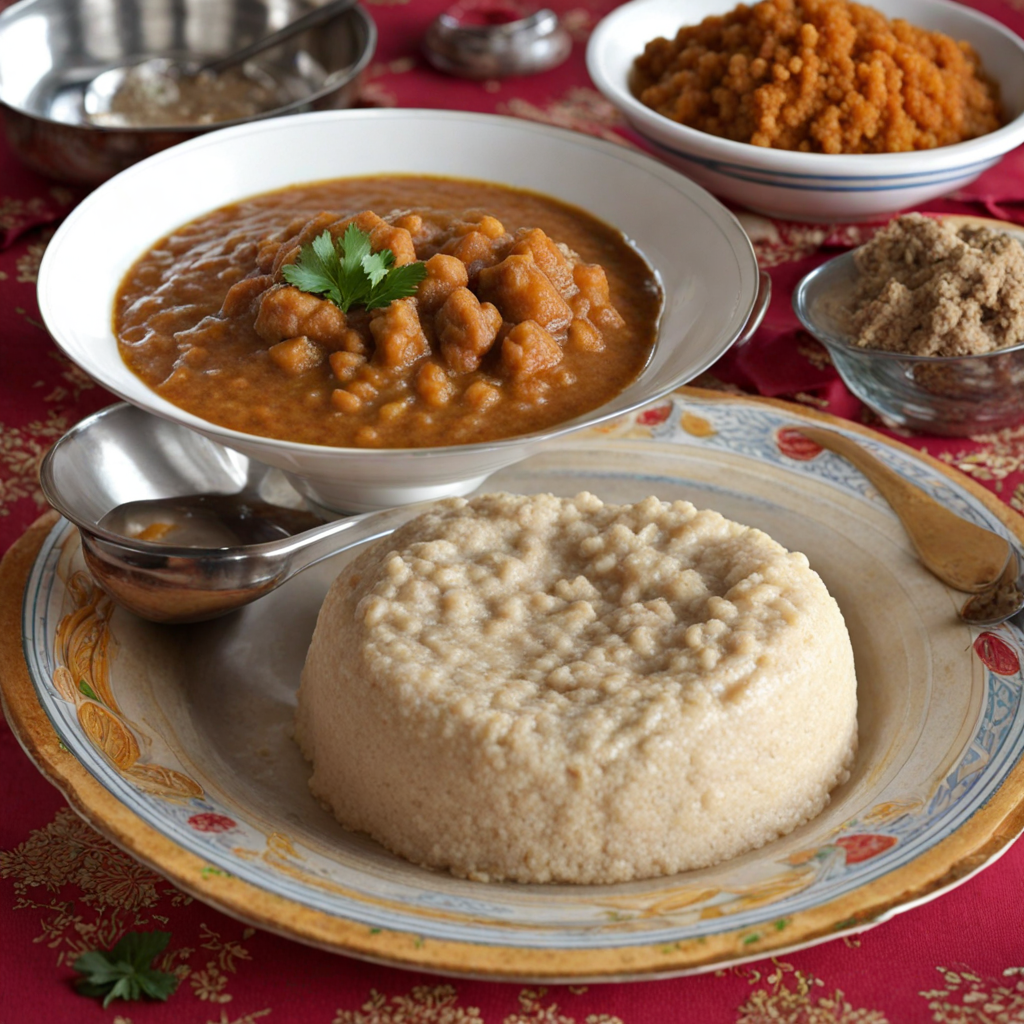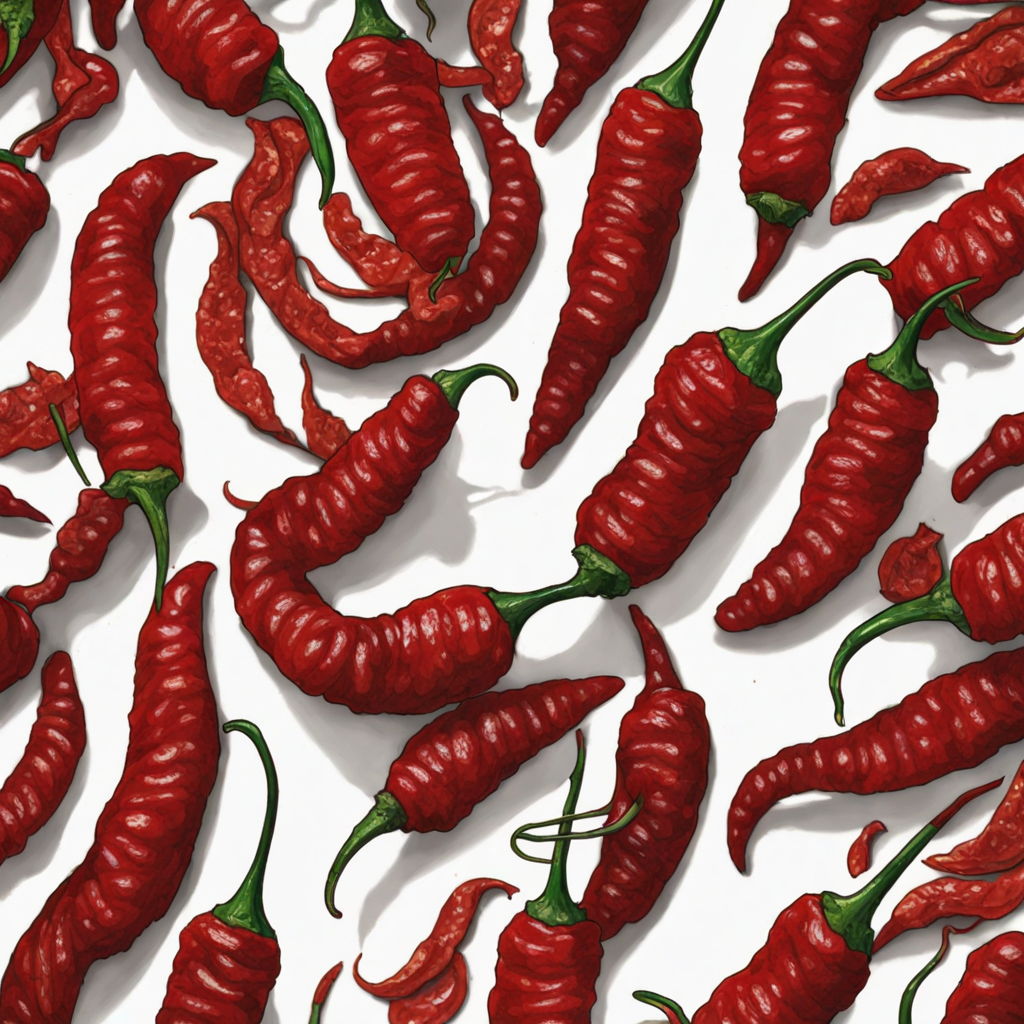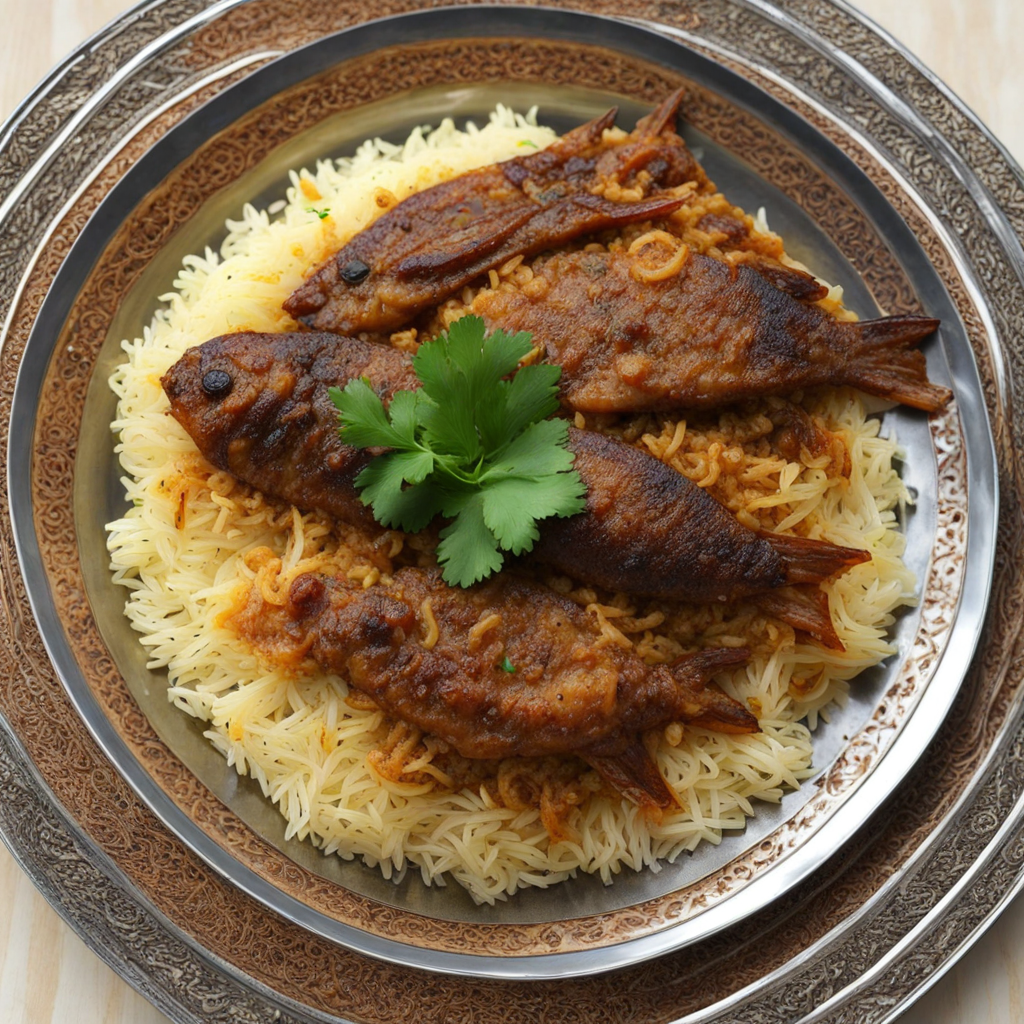Aseeda
Aseeda is a traditional Sudanese dish that embodies the essence of Sudanese culinary culture, characterized by its unique texture and subtle flavors. This dish is primarily made from wheat or sorghum flour, which is cooked with water to create a thick, porridge-like consistency. The process involves stirring the mixture continuously until it achieves a smooth and elastic texture, resulting in a comforting staple that is both versatile and satisfying. Aseeda is often served warm, resembling a large mound or cake, and has a mildly nutty flavor that serves as a perfect base for various accompaniments. One of the delightful aspects of Aseeda is its adaptability; it can be enjoyed with a variety of toppings and sides that enhance its flavor profile. Traditionally, it is paired with savory stews, such as meat or vegetable dishes seasoned with spices like cumin and coriander. Additionally, Aseeda can be enjoyed with sweet toppings, such as honey or dates, making it a delightful choice for breakfast or dessert. This flexibility allows for a personalized dining experience that caters to diverse tastes and preferences. In Sudanese culture, Aseeda is not just a meal but a part of communal gatherings and family celebrations. It is often shared among friends and family, highlighting the importance of togetherness in Sudanese society. The act of tearing off pieces of Aseeda and dipping them into rich stews or sauces is a cherished tradition, creating a sense of connection and warmth. As you explore the flavors of Aseeda, you will not only discover a unique taste but also a profound cultural experience that reflects the heart of Sudanese hospitality.
How It Became This Dish
The History of عصيدة (Asida) in Sudan #### Origin and Etymology عصيدة (Asida) is a traditional Sudanese dish with deep roots in the country's culinary heritage. The term “Asida” comes from the Arabic word "عصيد," which means to knead or mix. This culinary staple is primarily made from a simple mixture of flour (usually wheat or sorghum) and water, cooked into a thick, porridge-like consistency. The origins of Asida can be traced back to ancient Sudanese civilizations, where grains were a fundamental part of the diet. The dish exemplifies the resourcefulness of Sudanese people, allowing them to create sustenance from easily accessible ingredients. In Sudan, Asida is often associated with the Nuba Mountains region and the broader cultural practices of the Sudanese people. The dish is believed to have been consumed for centuries, with its recipe passed down through generations. It symbolizes the agricultural lifestyle of the Sudanese, showcasing their reliance on local grains that have sustained them through various climatic and economic changes. #### Cultural Significance Asida holds a central place in Sudanese culture and is often enjoyed during significant occasions and gatherings. It is commonly served during religious celebrations, weddings, and family gatherings, reflecting its importance as a symbol of hospitality and communal sharing. The dish is usually accompanied by a variety of stews and sauces, such as mulukhiyah (jute leaves), lamb, or chicken, enhancing its flavor and nutritional value. In Sudanese households, preparing Asida is often a communal activity, bringing families together in the kitchen. Traditionally, the preparation involves boiling water and slowly adding the flour while stirring vigorously to achieve the desired consistency. The process is labor-intensive and requires skill, as the cook must ensure that the Asida has the right texture—smooth, elastic, and free of lumps. The act of serving Asida is also steeped in tradition. It is often presented on a communal platter, with diners using their hands to break off pieces and scoop up accompanying stews. This method of eating fosters a sense of community and togetherness, reinforcing social bonds among family and friends. #### Evolution Over Time Throughout its history, the preparation and consumption of Asida have evolved, influenced by various social, economic, and cultural factors. The introduction of new cooking techniques and ingredients has diversified the dish while maintaining its core essence. During the 19th and 20th centuries, as Sudan experienced significant political and social changes, the culinary landscape began to shift. Colonial influences introduced new grains and cooking methods, leading to variations of Asida. While wheat remained the most common ingredient, other grains such as millet and barley began to be used, particularly in regions where these crops were more prevalent. The rise of urbanization in the late 20th century also impacted how Asida was prepared and consumed. With more people moving to cities, traditional cooking practices faced challenges as modern conveniences took precedence. Instant mixes and pre-packaged ingredients became available, making it easier for busy families to prepare meals. However, many Sudanese still prioritize traditional methods, especially during festive occasions, ensuring that the essence of Asida remains intact. In contemporary Sudan, Asida continues to be a beloved dish that transcends socio-economic boundaries. It is enjoyed by people from all walks of life, from rural villages to urban centers. Restaurants and food stalls across the country serve Asida, often with unique twists that reflect local flavors and preferences. For instance, in some regions, Asida may be flavored with spices or served with specific types of meat, showcasing the regional diversity within Sudanese cuisine. #### Global Recognition and Modern Adaptations As globalization has taken hold, Asida has gained recognition beyond Sudan's borders. The diaspora communities have played a significant role in introducing this dish to new audiences, facilitating cultural exchange and appreciation. Sudanese immigrants in countries like the United States, Canada, and the United Kingdom have established restaurants and food markets, serving Asida alongside other traditional dishes. Through these outlets, people from diverse backgrounds have discovered and celebrated Sudanese cuisine. Modern adaptations of Asida have also emerged, influenced by global culinary trends. Chefs are experimenting with new flavors, incorporating ingredients like herbs, spices, and even cheese to create innovative versions of the dish. These modern interpretations pay homage to the traditional roots of Asida while adapting to contemporary palates. In addition to its culinary significance, Asida has also garnered attention as a symbol of cultural identity. In a world where globalization often homogenizes food traditions, Asida stands as a testament to the resilience of Sudanese culture. Food has the power to connect people to their heritage, and Asida serves as a delicious reminder of the rich history and traditions that define Sudanese society. #### Conclusion The history of عصيدة (Asida) in Sudan is a narrative woven with threads of tradition, community, and resilience. From its ancient origins to its contemporary adaptations, Asida remains a cherished dish that embodies the spirit of Sudanese culture. It is a symbol of sustenance and togetherness, a dish that has evolved yet retained its significance over time. As Sudan continues to navigate the complexities of modern life while holding onto its rich culinary heritage, Asida will undoubtedly remain at the heart of Sudanese dining. It serves not just as nourishment for the body but also as a bridge connecting generations, cultures, and communities, ensuring that the history of this beloved dish will be cherished for years to come.
You may like
Discover local flavors from Sudan







